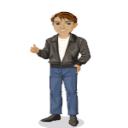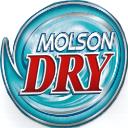Yahoo Clever wird am 4. Mai 2021 (Eastern Time, Zeitzone US-Ostküste) eingestellt. Ab dem 20. April 2021 (Eastern Time) ist die Website von Yahoo Clever nur noch im reinen Lesemodus verfügbar. Andere Yahoo Produkte oder Dienste oder Ihr Yahoo Account sind von diesen Änderungen nicht betroffen. Auf dieser Hilfeseite finden Sie weitere Informationen zur Einstellung von Yahoo Clever und dazu, wie Sie Ihre Daten herunterladen.
Dodgeman, please read?
Dodgeman, I am not one of those folks who has it out for you but I have noticed that when it comes to tire questions you consistently give answers that are not only incorrect, but could be dangerous. Tires are the #1 safety item on a vehicle so I take these issues very seriously.
For example, today you gave the following advice to about tire pressures: "look on the tire its self,put what the tire says to have in it not what the vehicle calls for,each tire will be different from the original tires that was on it,and the sticker only applies to the original tires in most cases,"
This is totally wrong. The only information given on the tire sidewall is the max load capacity at max pressure, which is the same for EVERY tire in that size & service description no matter what brand or model. It is not a recommended pressure for any vehicle. I recommend studying this link to get up to speed on modern tire technology: http://www.tiresafety.com/images/Tire%20Replacemen...
I've seen a similar thing when someone asks whether tires when only being replaced as a pair should be mounted on the front or rear axle.
The Rubber Manufacturers Association (RMA) and all the major tire manufacturers insist they be installed on the rear axle (expecially on FWD) for safety reasons. Michelin even went to the trouble of making a video showing why, which you will find here:
http://www.michelinman.com/tire-care/tire-basics/
Beyond the safety concerns, since 2000 when the lawyers discovered there was money to be made on tire liability lawsuits, giving bad information on tires can become very expensive to a shop owner.
Just trying to help.
I am by the way an ASE Certified Automotive Service writer with 5 years of experience in the tire industry.
One more additional detail to prove my point about not using the tire sidewall instead of the door placard as a guide to recommended tire pressure. This quote comes from the 2007 BF Goodrich catalog:
"WARNING: Serious or fatal injury may result from tire failure due to underinflation or overloading. To assure correct air pressure and vehicle load, refer to vehicle owners manual or tire information placard on the vehicle."
Or this from the 2007 Pirelli catalog: "Recommended tire inflation pressures for your vehicle can be found either in your vehicle owners manual or your vehicles tire placard. Correct pressures are related to loads, speeds and vehicle handling and are vital for even braking, maximum traction and good tire life. Overinflation results in an uncomfortable ride, a reduced area of tire contact with the road surface, higher susceptibility to impact damage and rapid wear on the tread center."
Max pressure on the sidewall is usually higher than the recommended psi.
4 Antworten
- BFHLv 6vor 1 JahrzehntBeste Antwort
Here Here! I put 40 psi in the tires on my Dodge Colt do you think that is what it says on the doorjamb? No! Do you think my 16" 40 series tire should take whatever pressure the 13" tires that came on the car took? I hope not!
If I put extra load truck tires on my GMC Safari should I run them at 32psi or whatever c**p they put in the door jamb.
Sorry I hold my vehicles tire quality to a higher standard than some corporate pennypincher who will give me whatever tire they can get away with putting on there, but different tire technology calls for different tire pressure.
- ButwhatdoIno?Lv 6vor 1 Jahrzehnt
While I do not know his responses, the 32 lbs is safe until you get the correct pressure for your car.
If your tire is gonna have a blowout, the blowout will occur in the sidewall (where there is less rubber-2 ply compared to 4 ply on the tread) and the reason for most sidewall blowouts is NOT enough pressure in the tire....which leads to excess flexation of the tire which causes internal heat build up and softening. And having a front tire blowout while travellling downhill and trying to slow down from 60 is not a nice feeling to be sure.
- vor 1 Jahrzehnt
i can't find any first hand source to argue with you in a short time. but look carefully, the side wall of a tire has "recommanded pressure" and "max pressure"
i agree with dodgeman on this one. Because they are different varies from tires to tires.
I mean, you are right at one point, nearly all tires within one size has the same recommanded pressure, but look carefully, the "regular all season" has a different recommanded pressure than the "High perforamance" tires.
and hes is refering to what the questiner asked "what is the right pressure because my car rides rough"
hes refering to the sticker part, because a 16" x 6" wheel can fit from 195-215, (some people just prefers wider tire rather than the stock spec) and they all have different recommanded pressure, the best bet when you pump ur tire at the gas station would be "whats printed on the sidewall" and not the sticker.
- LabLv 7vor 1 Jahrzehnt
I'm going with Dodgeman. Information on the tires that you have and a little common sense will suffice. Every written article regarding tires has the same base information but with a few "interpretations" to them.





